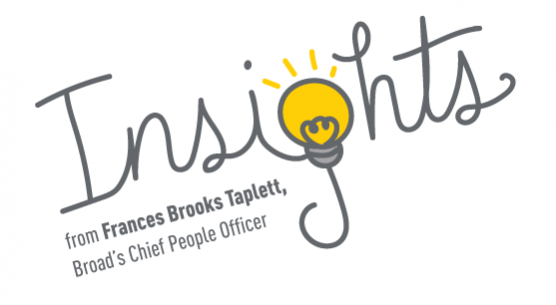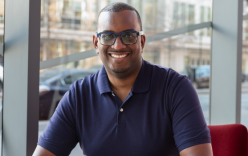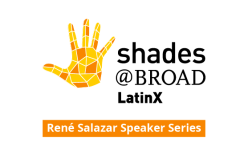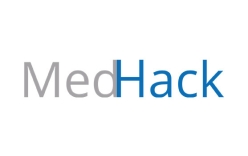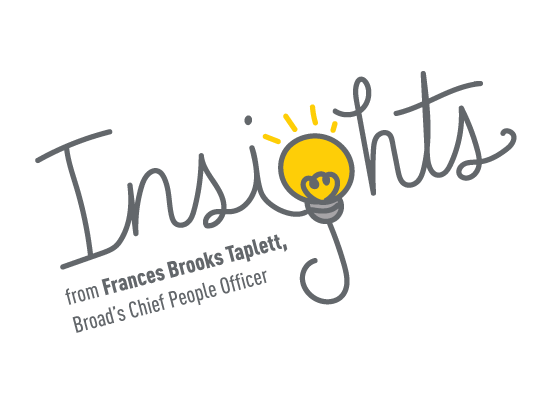
Read the first post in Insights, a new blog from Frances Brooks Taplett, Broad’s Chief People Officer, where she discusses the need for organizations to move beyond a sole focus on diversity—because only in organizations that are inclusive and equitable can diversity truly thrive. Broad has created a new program to meet this challenge, and to spur meaningful change.
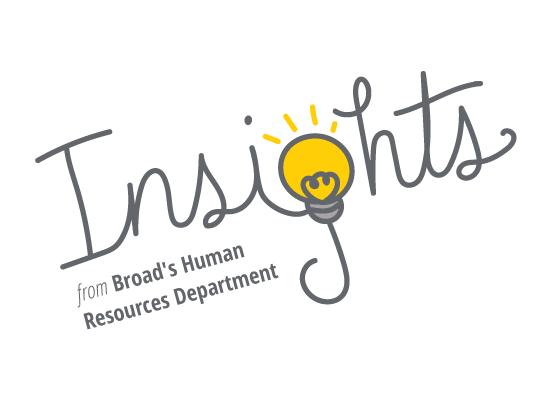
When I started my career over a decade ago, many organizations made only cursory attempts to increase the diversity of their memberships and workforces, particularly at leadership levels. Now, after movements such as #MeToo and Black Lives Matter, the situation has certainly changed. Diversity is a top priority at most organizations, and more and more are implementing metrics-based diversity strategies and even (in some countries, e.g. Iceland and Norway) quotas on representation and hiring.
But strategies that focus on diversity alone aren’t enough to drive meaningful change. To do that, we need to focus on inclusion and equity first—otherwise, we’ll never unlock the power of diversity. And, alongside that more internal work, we also need to focus our efforts on our external community. While Broad examines and grows our inclusion, equity, and diversity work within our organization, we're committed to broadening our science to fully include underserved communities and expanding and accelerating the diversity of future scientists. Together, all this work—not just an isolated focus on diversity—will help make Broad an inclusive model for biomedical research.
It makes sense that organizations usually start with diversity: it’s easy to see and measure—and the numbers do matter. There is an inherent advantage to being able to interact with and draw from a diverse set of perspectives, and we see many data points that show correlations between data and outcomes. But if members of an organization don’t feel comfortable sharing their perspectives (or if the organization fails to encourage a variety of opinions and strike partnerships well beyond its typical circle), and if members don’t have equal opportunities to succeed, the diversity numbers won’t matter.
Surveys consistently show that if you’re not in the majority group at your organization (meaning, usually, that you’re not a white, heterosexual, cisgender man), you are less likely to feel included. And the more ways in which you’re different from the majority—for example, in terms of both race and gender identification—the less included you’re likely to feel. In a study I co-authored at the Boston Consulting Group, the percentage of people who say they feel free to bring their authentic selves to work or that their perspectives matter drops by 4 to 20 points (versus the white, hererosexual, cisgender man) depending on how many dimensions of diversity they have. For example, a Black lesbian Broadie (let’s call her Sally) would have three dimensions of diversity (as someone who identifies as Black, as a woman, and as a lesbian), so the study finds that she would be about 15% less likely than those in the majority to report that she feels included. We need to focus on inclusion first to ensure that all Broadies—including Sally—can bring their full, authentic selves to work and feel that their perspectives really matter.
If we can couple inclusion with equal opportunities for everyone to succeed, diversity can thrive. To me, inclusion and equity are about getting our internal house in order, while diversity is about bringing in and retaining new talent at the Broad. We have done significant work on pay equity and will share more in a future blog posting. But equity must go beyond pay, to opportunities for promotion, publishing, and experiences. To that end, we are taking a hard look at our internal HR processes, and the lived experience across the Broad, to ensure all Broadies have equal opportunities. We often talk about equality, but if the starting point isn’t the same for everyone, then equality doesn’t beget equity—so we must be explicitly focused on how we actually achieve equity.
At the Broad we are calling our program IDEA: Inclusion, Diversity, Equity, and Allyship. Allyship is also critical, because this work cannot just be done by those who are outside the majority—we need allies to be involved, too. We have actively added this piece to encourage white, cisgender, straight men to be a part of this work, but we also want to encourage people who might identify with one underrepresented group to be allies of another. This work will be more meaningful and impactful if done together.
So how do we achieve these goals? To start, we will:
- Build on the clear commitment and follow-through from our executive leadership team to drive meaningful change in terms of inclusion, equity, and diversity at the Broad.
- Educate our managers and teams on skills for building and sustaining an inclusive environment.
- Review and understand our processes to take bias out (you may not be able to take bias out of people, but you can take it out of processes). This will involve, among other things, how we run meetings, how we share the best assignments, and how we all interact with one another.
- And, finally, track our progress and hold ourselves accountable on the data from both lived experience and hiring, promotion, and retention—and communicate and share that progress with our community.
- All of this, again, must be coupled with ongoing efforts around broadening our science to fully include underserved communities as well as expanding and accelerating the diversity of future scientists. Only when we take on all of this work in concert will we make truly impactful change.
This is a big challenge. But the Broad is all about meeting enormous challenges with creativity and innovation. It is a place of why and how, not of why not and can’t. I’m excited to take these same principles of scientific discovery and turn them toward our IDEA agenda—starting with inclusion and equity, and then leveraging our diversity data to understand our progress. Meaningful change takes time, but I know we can achieve it.


